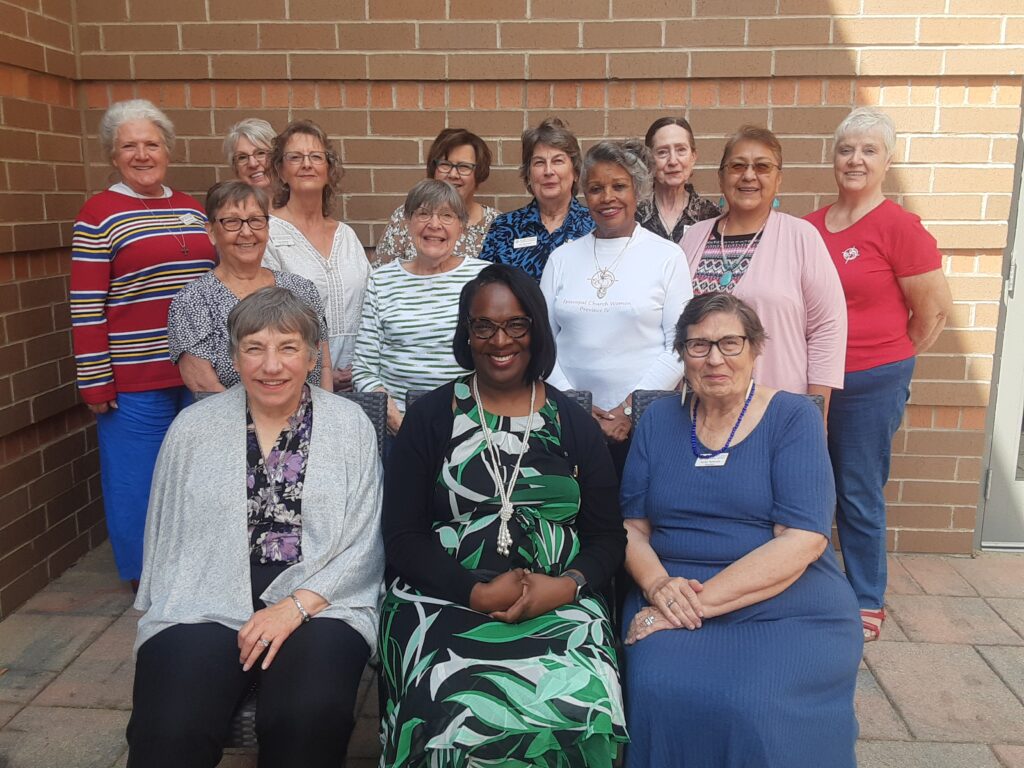Episcopal Church Women in the News 09-29-23
Marine Corps veteran ready for ‘best job in the church’ as bishop overseeing military chaplains
“Most of the girls played the flute and clarinet. Not me,” Ann Ritonia said in an interview with Episcopal News Service. “I played the euphonium.”
‘A Legacy of Love’ campaign aims to rebuild Browse’ n Buy
“Browse ‘n Buy is a wonderful resource for our community, and the building is in dire need of restoration and improvement.”
See Washington National Cathedral’s New Racial Justice-Themed Stained-Glass Windows
The protesters—including one sitting in a wheelchair—hold up signs that say “Fairness” and “No foul play.”
NYFS Receives Generous Donation From Connecticut Choral Society
NYFS Executive Director Candice Bohr said she was “grateful … of the gift and for the partnership with Trinity and CCS.
Clergy serving Indigenous communities gather for ‘We Are All Related’ conference
“The first thing we need to do is listen, and that’s what this event is for.”
———
ECW of Delaware ECW Annual Meeting, Luncheon and Worship
October 7, 2023.
The Program will include brief talks from Mathy Downing, UTO Province III member of the National UTO Board. Cindy Mohr, ECW Province III member of the National ECW Board. A representative from Primeros Pasos, our outreach target for this year. • The Business Meeting will include election of President and Vice-President. Questions contact:Beth FitzPatrick, gr8art@outlook.com
Arkansas ECW Fall Gathering – Oct 13 – 14
Fall Gathering is ECW’s statewide annual meeting and a time for fun and fellowship. This year, we are honored to have the Rev. Susanne Methven of Tulsa, OK, as our speaker. We are excited that St. Bartholomew’s Episcopal Church will host our annual Fall Gathering! All events Saturday will be held in the parish hall and sanctuary. To register and more info
Episcopal Church Women Diocese of Mississippi Annual/Fall Conference
Saturday, October 21, 2023
SPEAKER: Rev. Deacon Becca Walton,Curate, All Saints, Tupelo Presentation: My experience as a mbr of the Community of St Anslem, a new monastic RSVP by October 4, 2023 to:episcopalchurchwomenms@gmail.com
Using Picture Books for Racial Healing
Registration is now open for Dismantling Racism training sessions in August, September, October, and November. Miriam McKenney leads the trainings, which take place on Zoom.
Choose 1 month:
- October (10, 17, 24 from 6 to 8 p.m.). Sign up here.
- November (1, 8, 15 from 1 to 3 p.m.). Sign up here.
“The dismantling racism course is terrific,” Lisa Barker of St. Patrick’s, Dublin, says. “The use of storytelling and scripture brings things into focus that, for me, had been unacknowledged. Another wonderful aspect of this course is the formation of community among the participants. Miriam and Emma made the course easy to access, consistent with the Four-Fold Path of Love, and I truly looked forward to the sessions. Our discussion times flew by as the topics were thought-provoking. I highly recommend this course!”
Email Director of Dismantling Racism in Southern Ohio, Miriam McKenney, to learn more.
2023 Fall Speaker Series – ECW Diocese of Chicago
October 4 – Hunger – A Continuing Paradox?
October 11 – Springboard Kitchen: Helping People Reach Next Stage Culinary Dreams
October 18 – Sustainable Gardening

 Mira Washington from Church Women United, CWU, spoke to the board this past Saturday while they all met in Syracuse for a board meeting. She went on to visit with the board members for the rest of the weekend and shared many delightful stories about the lives of Christian women and how their dedicated service is honored around the world.
Mira Washington from Church Women United, CWU, spoke to the board this past Saturday while they all met in Syracuse for a board meeting. She went on to visit with the board members for the rest of the weekend and shared many delightful stories about the lives of Christian women and how their dedicated service is honored around the world.